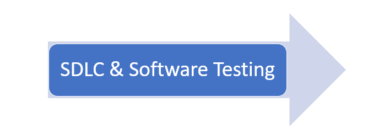Software testing types and levels
In order to understand what is Software Testing, first we need to understand the process of Software development.
SDLC: The process of Software development that is called SDLC- Software development life cycle.
SDLC Phases: SDLC has seven phases as below;
Planning
Requirement Analysis
Design
Coding
Testing
Deployment
Maintenance
Importance of Software Testing: Testing is the fifth phase and without completing fifth phase, Software cannot be deployed, hence Software Testing is a major stage in every Software Development. Testing is done to check if we are building the Right product and you are building the product Right. To make it simple lets see what does these two sentences mean;
Building the Right product: This product should work without any issue.
Building the product Right: This product is according to the requirements of customer, its also called Validation in Testing.
A simple example of it, when you logout from your email, it should go to the logout page, but if customer wants it should direct to main page or any page customer requires. So if logout function works it means you are building the Right product and when it directs to customer required page it means you build the product Right or correctly as per customer requirement.
Types and Classifications of Testing: Two Major Types of Testing are Manual Testing and Automation Testing
Manual Testing & Automation Testing: In manual Testing, Tester test the software Manually and in Automation it needs to write the Test Scripts/ Test Cases to Test it.
Another classification of Testing is Functional Testing and Non- Functional Testing.
Functional Testing & Non- Functional Testing: In Functional Testing, codes, functions and components of a Software are tested, for example if an application has Login/ Logout Function, it needs to Test if it works as per the mentioned Function.
In Non-Function Testing we check the performance of an Application that includes Speed, Scalability, Load testing, all these come under Non Functional Testing.
Software Testing Techniques: There are two common techniques of Software Testing that are Black Box Testing and White Box Testing.
Black Box Testing: Here we test the overall behavior of a product, without knowing how it works internally, all inputs bring right outputs and looks overall behaving correctly.
White Box testing: Here we test the internal functions of a product and match it with customer requirements and see if all the codes working fine.
Levels of Software Testing
Unit Testing:
When we develop a software we write codes but these codes are divided into different types. For example in Java we write Classes, so when it comes to Test the smallest part of Software its called Unit Testing. If a developer using Java to develop codes, this testing will be called JUnit.
Integration Testing:
Once a software is tested on all the units and we integrate all the units to check Test the software, it’s called Integration Testing.
System Testing: Once software is ready to be deployed on your system we test it to see how would it works with actual Data on the system, it’s called System Testing.
Acceptance Testing: Once System Testing done, you will match it with customer requirements that is called Acceptance Testing.
